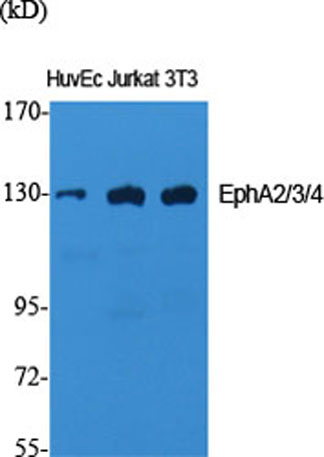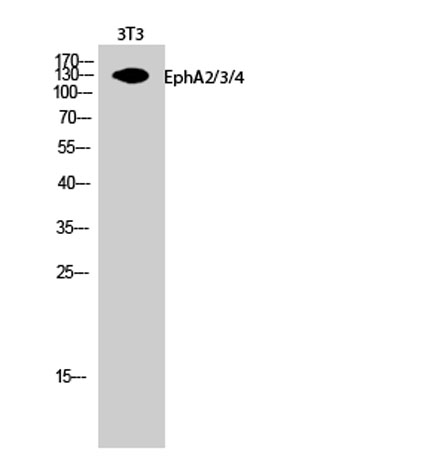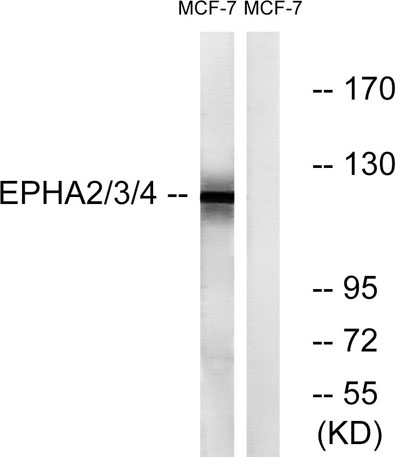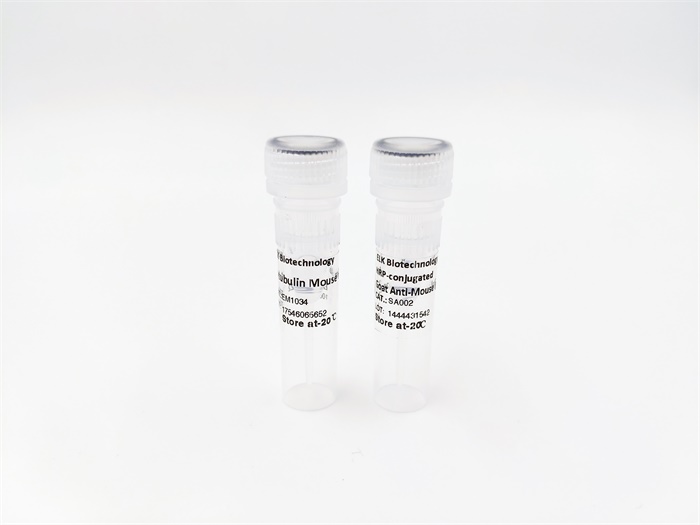









EphA2/3/4 rabbit pAb
 One-click to copy product information
One-click to copy product information$148.00/50µL $248.00/100µL
| 50 µL | $148.00 |
| 100 µL | $248.00 |
Overview
| Product name: | EphA2/3/4 rabbit pAb |
| Reactivity: | Human;Rat |
| Alternative Names: | EPHA2; ECK; Ephrin type-A receptor 2; Epithelial cell kinase; Tyrosine-protein kinase receptor ECK; EPHA3; ETK; ETK1; HEK; TYRO4; Ephrin type-A receptor 3; EPH-like kinase 4; EK4; hEK4; HEK; Human embryo kinase; Tyrosine-protein kinase TYRO |
| Source: | Rabbit |
| Dilutions: | Western Blot: 1/500 - 1/2000. Immunofluorescence: 1/200 - 1/1000. ELISA: 1/40000. Not yet tested in other applications. |
| Immunogen: | The antiserum was produced against synthesized peptide derived from human EPHA2/3/4. AA range:556-605 |
| Storage: | -20°C/1 year |
| Clonality: | Polyclonal |
| Isotype: | IgG |
| Concentration: | 1 mg/ml |
| Observed Band: | 130kD |
| GeneID: | 1969/2042/2043 |
| Human Swiss-Prot No: | P29317/P29320/P54764 |
| Cellular localization: | Cell membrane ; Single-pass type I membrane protein . Cell projection, ruffle membrane ; Single-pass type I membrane protein . Cell projection, lamellipodium membrane ; Single-pass type I membrane protein . Cell junction, focal adhesion . Present at regions of cell-cell contacts but also at the leading edge of migrating cells (PubMed:19573808, PubMed:20861311). Relocates from the plasma membrane to the cytoplasmic and perinuclear regions in cancer cells (PubMed:18794797). . |
| Background: | This gene belongs to the ephrin receptor subfamily of the protein-tyrosine kinase family. EPH and EPH-related receptors have been implicated in mediating developmental events, particularly in the nervous system. Receptors in the EPH subfamily typically have a single kinase domain and an extracellular region containing a Cys-rich domain and 2 fibronectin type III repeats. The ephrin receptors are divided into 2 groups based on the similarity of their extracellular domain sequences and their affinities for binding ephrin-A and ephrin-B ligands. This gene encodes a protein that binds ephrin-A ligands. Mutations in this gene are the cause of certain genetically-related cataract disorders.[provided by RefSeq, May 2010], |
-
 Western Blot analysis of various cells using EphA2/3/4 Polyclonal Antibody
Western Blot analysis of various cells using EphA2/3/4 Polyclonal Antibody -
 Western Blot analysis of 3T3 cells using EphA2/3/4 Polyclonal Antibody
Western Blot analysis of 3T3 cells using EphA2/3/4 Polyclonal Antibody -
 Immunofluorescence analysis of A549 cells, using EPHA2/3/4 Antibody. The picture on the right is blocked with the synthesized peptide.
Immunofluorescence analysis of A549 cells, using EPHA2/3/4 Antibody. The picture on the right is blocked with the synthesized peptide. -
 Western blot analysis of lysates from MCF-7 cells, using EPHA2/3/4 Antibody. The lane on the right is blocked with the synthesized peptide.
Western blot analysis of lysates from MCF-7 cells, using EPHA2/3/4 Antibody. The lane on the right is blocked with the synthesized peptide.

 Manual
Manual